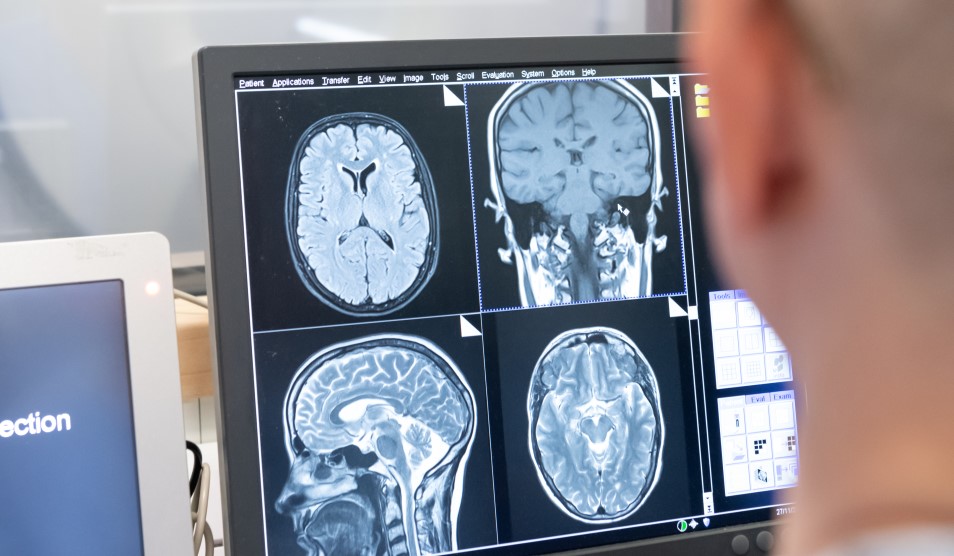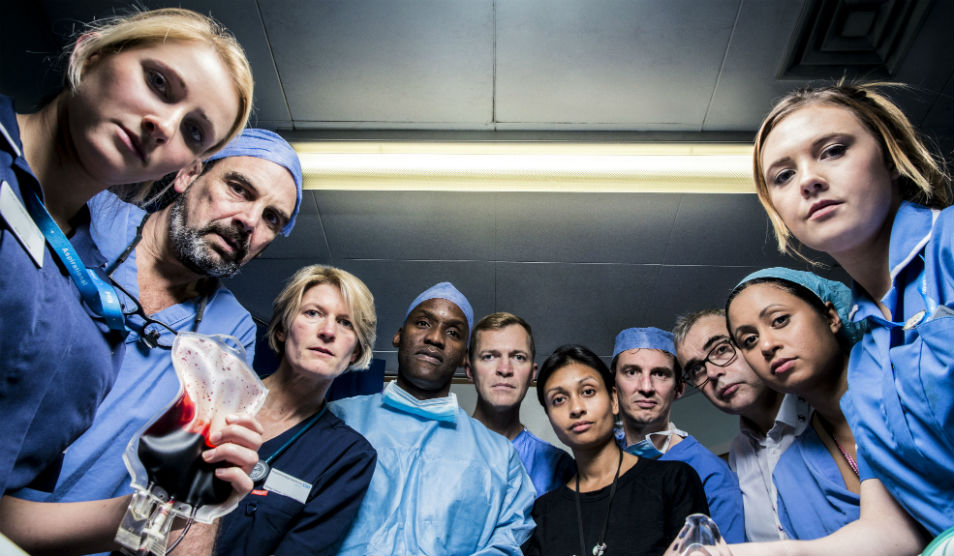Trust first in the world to use focused ultrasound for essential tremor on both sides of the body
Clinicians at Imperial College Healthcare NHS Trust have used high-intensity, focused ultrasound waves for the first time to treat a patient with debilitating essential tremor (ET) on both sides of his body, avoiding traditional invasive brain surgery.
The procedure is the subject of a trial at the Trust funded by INSIGHTEC®, the company who produced and developed the technology, to determine the safety and effectiveness of using their Exablate Neuro™ device to treat both sides of the brain in patients with bilateral ET.
In previous studies, patients were only offered treatment on one-side to the brain, usually the side which controlled their dominant hand, which led to NICE approving its use for the unilateral treatment of medication refractory ET, with special arrangements, in June of 2018. In this study the patient is offered a staged treatment whereby both sides of the brain are treated, at least nine months apart.
John Dickinson was the first patient in the trial. The 75 year-old was originally treated in 2017 and received his second treatment in January 2019 following which he has been tremor free. He has lived with ET on both sides of his body for more than 60 years.
Speaking a few weeks after his treatment Mr Dickinson said:
“Having now received treatment on both sides of my brain, I feel complete for the first time since I was a teenager. I am now able to do everyday tasks which to most people are so simple, but had been impossible for me.
“I recently went out for a meal with my family and was able to carry two pints to the table without spilling the contents; normally I would have to ask my wife to do it. It was quite an emotional experience for her.
“Essential tremor can make you a bit reclusive, even if you are a sociable person, because you don’t want to draw attention to yourself. Now I can’t wait to go out. The treatment has been absolutely amazing for me.”
Professor Wladyslaw Gedroyc, consultant radiologist and principal investigator for this trial Trust, said:
“We are very pleased with the way Mr Dickinson has responded to the treatment. We have seen from our original trial how much patients’ quality-of-life has improved but for many people with severe ET the condition affects both sides of their body. Providing treatment bilaterally is the next logical step in our research and we hope will provide patients with even better outcomes.”
Dr Peter Bain, consultant neurologist at the Trust and co-coordinator of the trial, said:
“Tremor is a progressive and disabling condition that affects patients' ability to perform their daily activities at home or in the workplace. While reducing or removing tremor on the dominant side can greatly improve the condition, as many tasks are performed using both hands it is preferable to alleviate tremor on both sides. This treatment could offer hope to many in the future by providing those with severe bilateral ET a potentially highly effective non-invasive treatment option. It will be fascinating to see the outcome of this new trial.”
Professor Dipankar Nandi, consultant neurosurgeon who performs the treatment said:
“If the results of the trial prove positive it will be a significant breakthrough for the future treatment of ET (and possibly other movement disorders, such as Parkinson’s disease) as often these conditions affect both sides of the body and hence the ability to lesion on both sides of the brain could dramatically reduce the functional impairment from these relatively common neurological disorders.”
Around one million people in the UK are affected by ET, a brain disorder characterised by uncontrollable shaking. Approximately, 100,000 people also have tremors caused by other movement disorders such as Parkinson’s disease or multiple sclerosis. Currently, patients with ET or other types of tremor are offered anti-tremor medication. If the medication is ineffective or causes adverse side effects, some patients are offered deep brain stimulation (DBS), though this brings a risk of brain haemorrhage or even death.
Tremor is thought to be caused by abnormal electrical circuits in the brain, which transmit tremors through the nervous system to the muscles. The new treatment, known as ‘MRI-guided focused ultrasound for brain’ works by accurately applying heat energy from ultrasound waves to very specific parts of the brain to break the abnormal circuit causing the tremor. The procedure is performed under local anaesthetic with no need for invasive brain surgery. Trials in America and Japan have shown that it reduces the severity of tremor by at least 80 per cent. The treatment works immediately and the results are expected to be long-lasting.
Around 25 patients with bilateral ET will take part in the trial, which is now full. The ultrasound machine being used for the trial was funded by a £1.1 million grant from Imperial Health Charity. In addition to its original grant, Imperial Health Charity has launched the Tremor Lifeline Appeal, which aims to raise £1.5 million to fund an additional MRI scanner and support the development of a dedicated MR guided focused ultrasound unit at St Mary’s Hospital.
Notes to editors:
1. The bilateral ET trial which John Dickinson participated in is full and cannot accept any new referrals or participants.
2. The Trust's first study into the use of high-intensity, focused ultrasound for ET has now closed and the results will be published this year. The Trust is working with NHS England to make the treatment available on the NHS.




